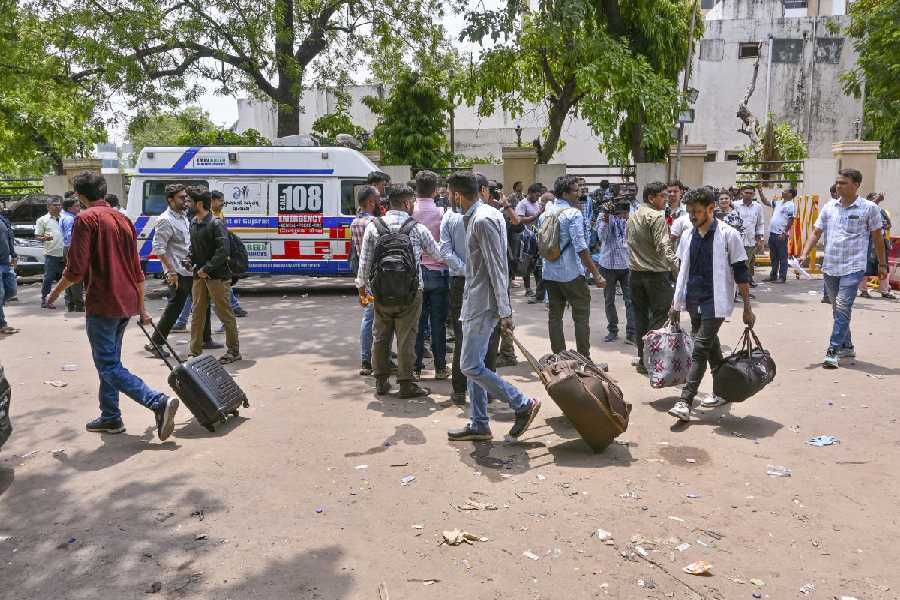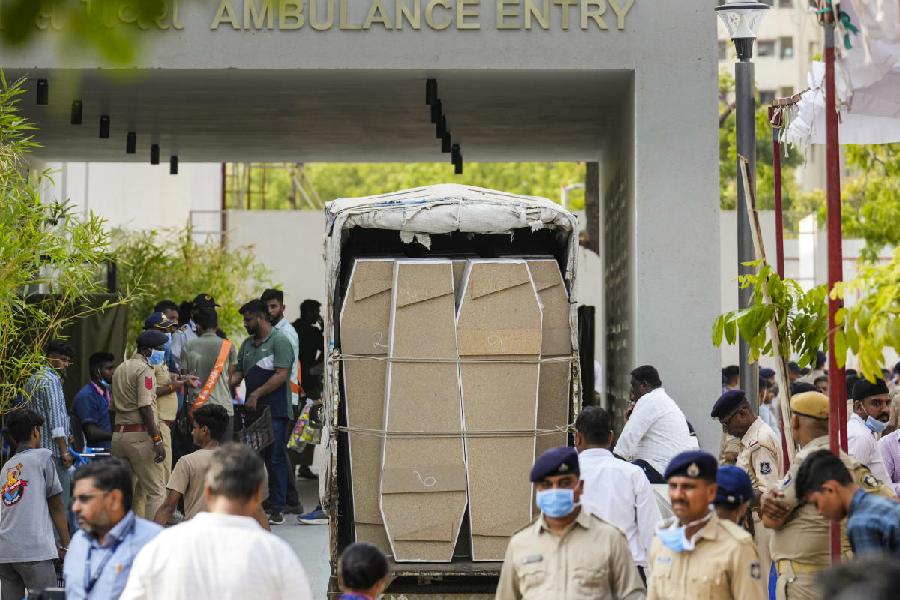
If the missing chill weren't reason enough to feel deprived, winged winter migrants too have given Calcutta a miss.
Regular birders have found fewer migratory birds than in previous years across the known avian habitats in the city and its surroundings this season, although nobody is sure if the weather is responsible for their absence.
Veteran Shubhankar Patra of SundayWatch, a nature lovers' forum whose members go on birding trips together every weekend, said the number of migratory birds was almost half compared to last year in parks, lakes, grasslands and thickets that attract avian species.
Patra has either surveyed or collated records from fellow birders on the avian presence this season in the East Calcutta wetlands, Central Park in Salt Lake, Santragachhi Jheel, Rabindra Sarobar and Purbasthali, the oxbow lake in Burdwan. "At each of these places, the number of migrants is disappointing," he said.
A bird count at Rabindra Sarobar last winter had revealed a Taiga flycatcher flock of around 50. The species, which breeds in northern Eurasia, the eastern part of Russia, Siberia and Mongolia, has been less conspicuous this season. In December, a group of amateur birders that had tracked the Taiga flycatcher population at Rabindra Sarobar saw only 25 members of the species.
The presence of another common winter visitor, the Brown Shrike, seems to have dwindled. During a visit to Nalban early this month, members of SundayWatch recorded a mere eight members of the species, compared to around 25 on an average in previous years.
The Brown Shrike breeds in northern Asia, from Mongolia to Siberia.
Among water birds, the presence of the Tufted Duck that breeds and spends summer in northern Eurasia is significantly less. During the Nalban count, there were only 120 members of the species, compared to 450 last year.
So, why have winter migrants turned their feathered backs on Calcutta this season?
"It is difficult to ascribe a particular reason for fewer migratory birds coming to Calcutta this winter. But it is true that there are significantly less numbers of most species in all the habitats, compared to the past few years," Patra said. "It could be because our city hasn't had a normal winter."
Conservationist and birder Sumit Sen agrees that this has been anything but an exciting winter for birdwatching. "Migration of birds seems to be weak this time. There have also been far fewer surprise birds this season, compared to last winter," he said.
"Four to five rare species for this region had been sighted in Calcutta or elsewhere in south Bengal the previous season. We have recorded none yet this time," Sen pointed out.
The past two winters had been prolific not only in terms of bird numbers but also diversity of species.
Birds like the Firethroat and the Sandwich Tern were spotted and photographed along with rarities like the Asian Stubtail and the Slaty-backed Flycather, both of which showed up at Rabindra Sarobar. This winter has drawn a blank.
A probable reason is that places along the migration route have offered more comfortable weather than usual this year, doing away with the need for birds to fly further in search of a winter home.
For Calcutta, a normal winter means a phase of chilly weather followed by a phase of not-so-cold days. The cold phase usually lasts about five days.
This season, there has hardly been a chilly phase lasting more than three days. And the not-so-cold phases have been interspersed with unusually warm periods. The coldest day of this season came last Monday, when the temperature dipped to 11.3 degrees Celsius. By Thursday, the minimum temperature was back to 18.3 degrees, three notches above normal.
In December, the minimum temperature had dipped below normal on just three occasions, each one followed by a Celsius spike.
Early last month, a group of birders spent an entire day each at Salt Lake's Central Park and Santragachhi Jheel, both visits yielding far fewer birds than expected. "We recorded eight Greenish Warblers in Central Park, less than a third of the 25 birds sighted there around the same time in 2014," said a member of the team.
Prakriti Sansad, which conducts a census of waterbirds at Santragachhi Jheelat the start of every year, recorded about 1,000 fewer ducks in the waterbody compared to January 2015.
Patra said any evaluation of migrant arrivals would be conclusive only at the end of the season. "If similar reports come from most places over the next 45 days, it can be said that fewer migrants have come this season."
Additional reporting by Rith Basu
Where have you gone birding this winter? Tell ttmetro@abpmail.com










